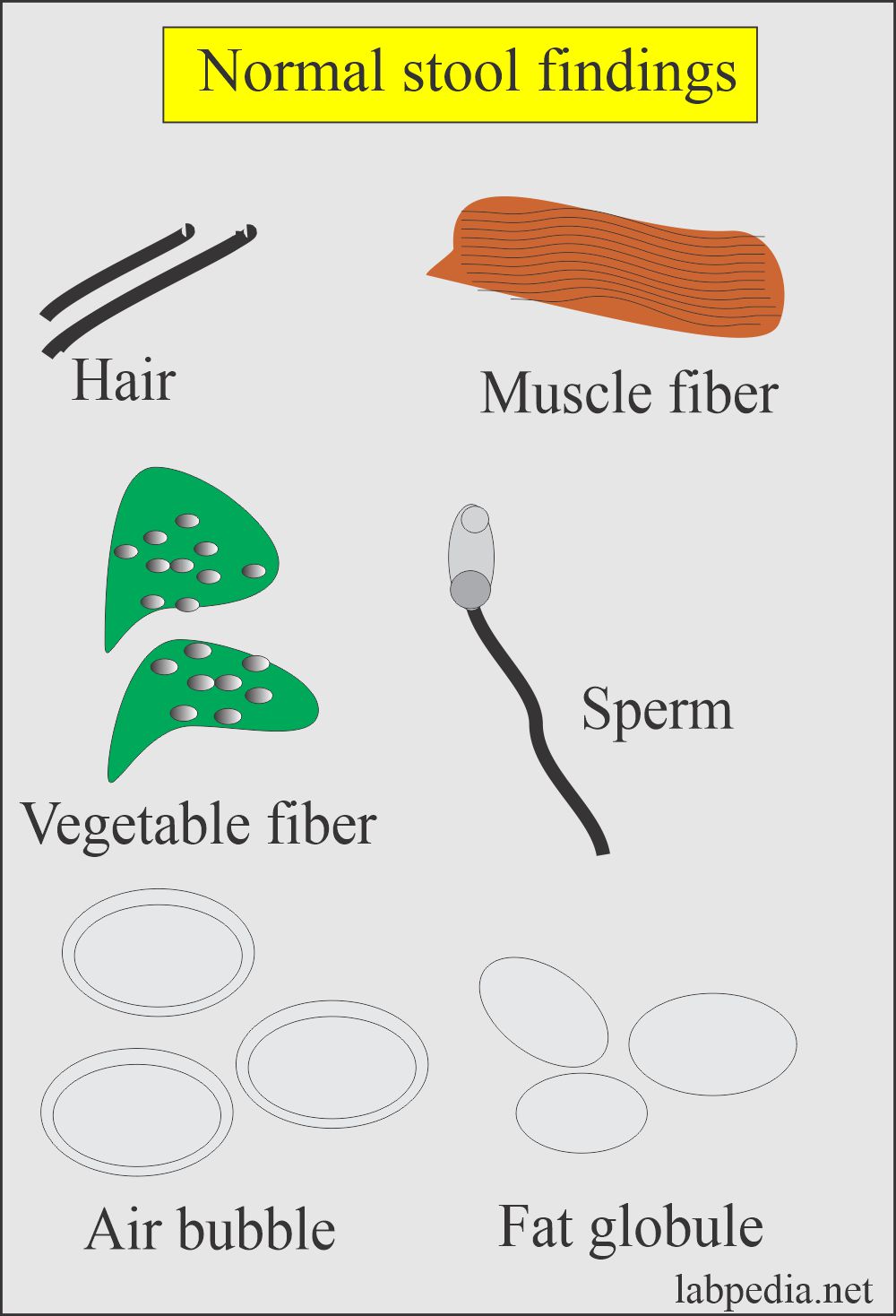General Stool Examination (GSE)
A stool test involves the collection and analysis of fecal matter to help diagnose certain conditions affecting the digestive tract. A stool sample is collected in a wide mouth clean container and then sent to the laboratory.
Normal components of the stool: normal is soft and formed
1. Undigested food particles like:
Vegetable cells, Vegetable fibers, Muscle fibers, Starch granules.
2. Water.
3. Bacteria.
4. Digestive tracts products like
Enzymes, mucus, bile pigments products.
Analysis of stool includes:
1. Visual examination
- Color (brown, dark brown or yellow-brown).
- Texture/consistency-formed (watery, bloody,+ loosely, Steatorrhea
- Odor (foul smelling)
- Helminthes
- Mucous
Types of container for feces
Normal stool findings
2. Microscopic examination includes:
1. Presence of pus cells.
2. Presence of RBCs.
3. Ova and parasites.
4. Presence of meat fibers and muscle fibers.
5. Presence of fat.
6. Yeast and molds)
7. Bacteria.
Procedure for the microscopic examination of fecal samples: Wet mount preparation
1. Place a drop of normal saline on a clean slide.
2. Place a small piece of stool on the slide and mix with saline, cover with a cover slip. If the specimen contains mucus, the examination prefers to be done without saline. The mucus is put on the slide and covered with cover slip.
استطعت ان اعرف ان العينة تحتوي على مخاط mucus من خلال الفحص الحسي ( البصري ) الفيزيائي
___________________________-1
3. Examine under 10X and 40X objectives.
4. Report the presence of:
Using of Iodine:
Iodine is useful for staining glycogen and making nuclei visible in protozoan cysts.
الجلايكوجين glycogen : بوليمر متعدد الوحدات، يشكل الجلوكوز وحدة البناء الأساسية في هذا الجزيء الذي يعمل كمخزن للطاقة في الحيوانات والفطريات. ترتبط كل وحدة غلوكوز مع الوحدة التي تليها بروابط من نوع آلْفَ، في حين تتكون التفرعات من روابط
3. Chemical examination:
One of the most common stool tests, the fecal occult blood test,
اختبار الدم الخفي : يستهدف البراز الذي لا تظهر عليه علامات وجود دم , لكن في الحقيقة يوجد دم داخله لهذا يسمى بالخفي
can be used to diagnose many conditions that cause bleeding in the gastrointestinal system, including colorectal cancer or stomach cancer.
الفحص الكيميائي للبراز يستهدف من لديهم
١- نزيف في الجهاز الهضمي
٢- من لديهم سرطان في القولون والمستقيم والمعدة
The reagent used is benzidine powder. A pinch of benzidine powder is taken in a test tube and acidified with 1-2 drops of glacial acetic acid and is mixed well in it, then added 1ml of hydrogen peroxide which is again mixed well. Then place a clean glass slide and place a small quantity of stool on it. Place 1-2 drops of the benzidine mixture prepared earlier on the stool specimen taken on the glass slide and observe for a change of color. Development of green to blue color is indicative of presence of occult blood in the stool specimen.
Fecal occult blood test




تعليقات
إرسال تعليق